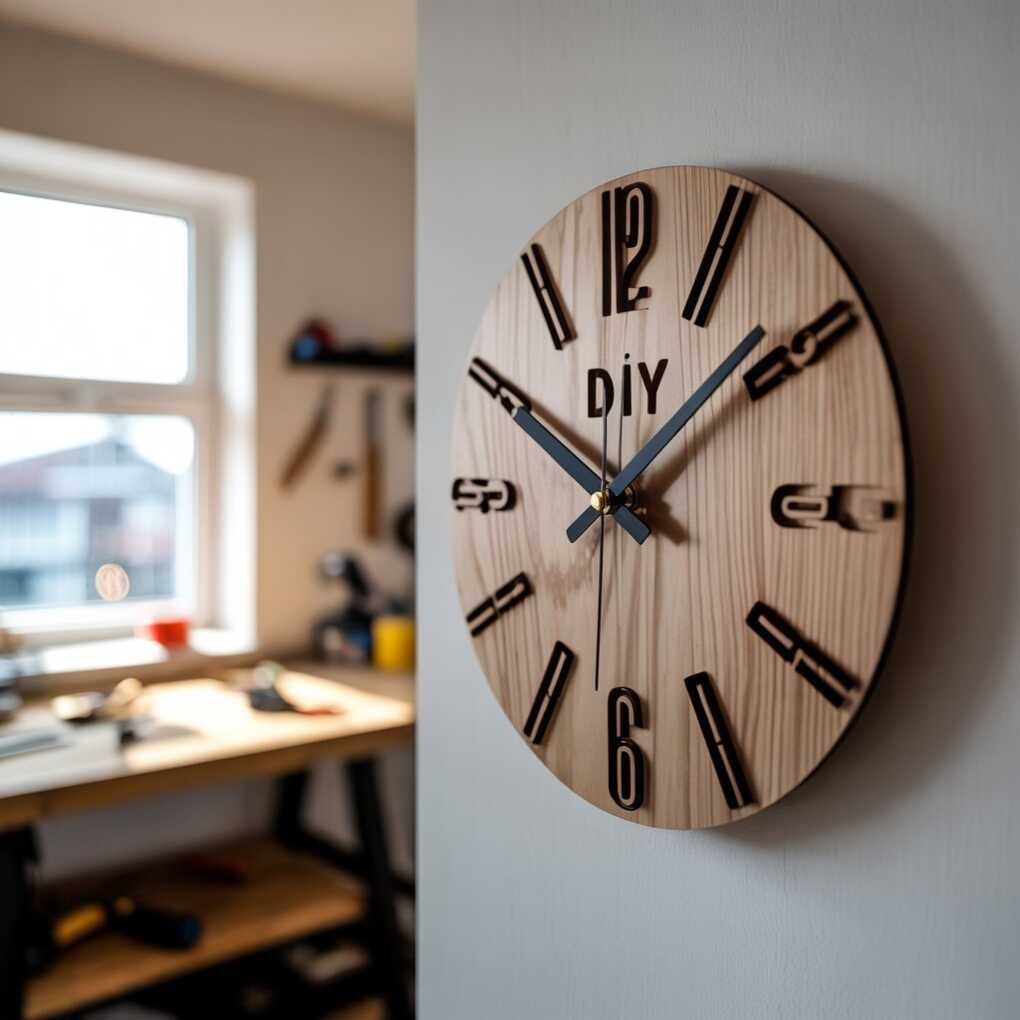Creating personalized decor for your home not only adds a unique touch to your living space but also offers a fulfilling DIY experience. One such captivating project is crafting a wooden wall clock using a laser engraving machine. This guide will walk you through the entire process, from designing to assembling, ensuring you end up with a stunning piece that complements your room perfectly.

Materials and Tools Needed
Before diving into the creation process, gather all necessary materials and tools to ensure a smooth workflow.
Materials
· Wood Panel: Choose hardwood like maple, walnut, or plywood for durability and aesthetics. The size depends on your design preference but a standard 12-inch diameter works well.
· Clock Mechanism Kit: Available at craft stores or online, these kits typically include the motor, hands, and hardware.
· Mounting Hardware: Screws, hooks, or a hanging frame to mount the clock on the wall.
· Protective Finish: Clear varnish or paint (optional) to enhance the wood’s appearance and protect the surface.
Tools
· Laser Machine: Ensure it’s compatible with your chosen wood type and thickness. It should be capable of both laser engraving and cutting wood.
· Design Software: Programs like Adobe Illustrator, Inkscape, or CorelDRAW are ideal for creating your clock design.
· Computer: To design and send files to the laser engraver.
· Safety Equipment: Safety glasses and gloves to protect yourself during the engraving process.
· Sandpaper: For smoothing edges and surfaces post-engraving.
Step-by-Step Guide
1. Designing the Clock Face
a. Conceptualize Your Design
Start by deciding on the theme or style of your clock. Options include minimalist designs, intricate patterns, nature-inspired motifs, or personalized elements like names and significant dates.
b. Create the Design
Using your chosen design software:
· Dimensions: Set up your canvas to match the size of your wood panel.
· Elements: Incorporate numbers, markers, and any decorative elements you desire.
· Layers: Separate different elements into layers if you plan to engrave varying depths or add multiple materials.
· Export: Once satisfied, export your design in a format compatible with your laser engraver, typically SVG or DXF.
2. Preparing the Wood
a. Select the Right Wood
Choose a wood type that complements your design and suits the room’s decor. Hardwood like maple offers a smooth surface ideal for detailed engravings, while plywood is cost-effective and sturdy.
b. Cut to Size
If not pre-cut, use a saw to trim your wood panel to the desired size. A 12-inch diameter is standard, but you can adjust based on personal preference.
c. Sand the Surface
Smooth all surfaces and edges with sandpaper to ensure the laser engraver operates effectively and to prevent splintering.
3. Setting Up the Laser Engraver
a. Safety First
Always wear safety glasses and gloves when operating the laser engraver. Ensure the work area is well-ventilated to avoid inhaling fumes.
b. Configure the Machine
· Power Settings: Adjust power, speed, and frequency based on the wood type. Test on a scrap piece to fine-tune settings.
· Focus: Properly focus the laser to achieve clean, precise engravings.
c. Import the Design
Load your design file into the laser engraving software. Position it correctly on the virtual canvas to match the physical placement on the wood panel.
4. Engraving the Design
a. Perform a Test Run
Engage the laser on a scrap piece of wood to ensure the settings produce the desired depth and clarity.
b. Engrave the Clock Face
Place the wood panel in the laser engraver and start the engraving process. Monitor the machine to address any issues promptly.
5. Assembling the Clock
a. Install the Clock Mechanism
· Mark the Center: Identify and mark the center point of your engraved design.
· Drill a Hole: Carefully drill a hole at the center for the clock mechanism shaft.
· Attach the Mechanism: Insert and secure the clock mechanism as per the kit instructions.
b. Attach the Clock Hands
· Positioning: Align the hour, minute, and second hands on the mechanism.
· Fixing: Ensure they rotate freely without touching the wood surface.
6. Finishing Touches
a. Sand Any Rough Edges
Smooth any areas where the engraving process may have caused splintering or unevenness.
b. Apply Protective Finish
· Varnish or Paint: Enhance the wood’s appearance and provide protection against wear.
· Drying: Allow sufficient time for the finish to dry completely.
c. Mount the Clock
· Hanging Hardware: Secure screws or hooks to the back of the clock for mounting.
· Placement: Choose a prominent spot on your wall, ensuring it’s level and secure.
Tips and Tricks
Design Optimization
· Contrast: Ensure high contrast between engraved and non-engraved areas for clarity.
· Depth Variation: Vary the engraving depth to add dimension and texture to your design.
· Symmetry: Maintain symmetry for a balanced and aesthetically pleasing clock face.
Safety Precautions
· Ventilation: Always engrave in a well-ventilated area to dissipate fumes.
· Machine Maintenance: Regularly clean and maintain your laser engraver to ensure longevity and performance.
Time Management
· Plan Ahead: Allocate sufficient time for each step, especially drying times for finishes.
· Patience: Rushing can lead to mistakes; take your time to ensure precision.
Personalization Ideas
· Photographs: Engrave a favorite photograph onto the wood for a highly personalized touch.
· Quotes: Incorporate inspirational quotes or significant dates into your design.
· Mixed Materials: Combine wood with acrylic or metal elements for a modern, hybrid look.
Common Mistakes to Avoid
· Incorrect Settings: Using inappropriate laser settings can burn or insufficiently engrave the wood. Always test on a scrap piece first.
· Overcrowded Design: Too many elements can make the clock face cluttered and hard to read. Keep it simple for maximum impact.
· Ignoring Scale: Ensure all elements are proportionate to the clock size to maintain readability and aesthetic balance.
Conclusion
Creating a DIY wooden wall clock with a laser engraving machine is a gratifying project that combines creativity with precision. Not only does it result in a unique piece of decor tailored to your style, but it also offers the satisfaction of having crafted something with your own hands. By following this guide, you’ll be well-equipped to design, engrave, assemble, and finish a beautiful wooden clock that enhances your room’s ambiance. Embrace the process, experiment with designs, and relish the blend of traditional craftsmanship and modern technology.
Whether you’re decorating your home, crafting a personalized gift, or exploring the capabilities of laser engraving, this project is a perfect blend of functionality and artistry. Happy crafting!
